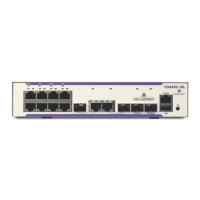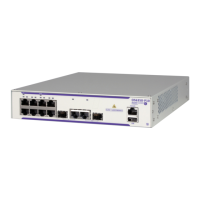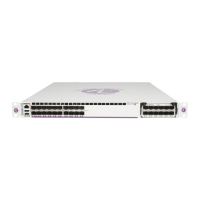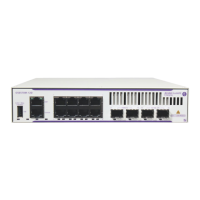OmniSwitch 6450 Hardware Users Guide September 2015 page 6-7
Setting Port Priority Levels
As not all Powered Devices (PDs) connected to the switch have the same priority within a customer
network setting, the switch allows the user to specify priority levels on a port-by-port basis. Priority levels
include low, high, and critical. The default priority level for a port is low.
• Low. This default value is used for port(s) that have low-priority devices attached. In the event of a
power management issue, inline power to low-priority is interrupted first (i.e., before critical and high-
priority).
• High. This value is used for port(s) that have important, but not mission-critical, devices attached. If
other in the chassis have been configured as critical, inline power to high-priority is given second
priority.
• Critical. This value is used for port(s) that have mission-critical devices attached, and therefore require
top (i.e., critical) priority. In the event of a power management issue, inline power to critical is
maintained as long as possible.
To change the priority level for a particular port, use the lanpower priority command. Since the switch
allows you to set priority levels on a port-by-port basis, be sure to specify slot/port information in the
command line. For example, the syntax
-> lanpower 1/1 priority critical
changes the priority value of port 1 to the highest priority level of critical. Now that the default value has
been reconfigured, this port should be reserved for those PDs that are mission critical for network
operations.

